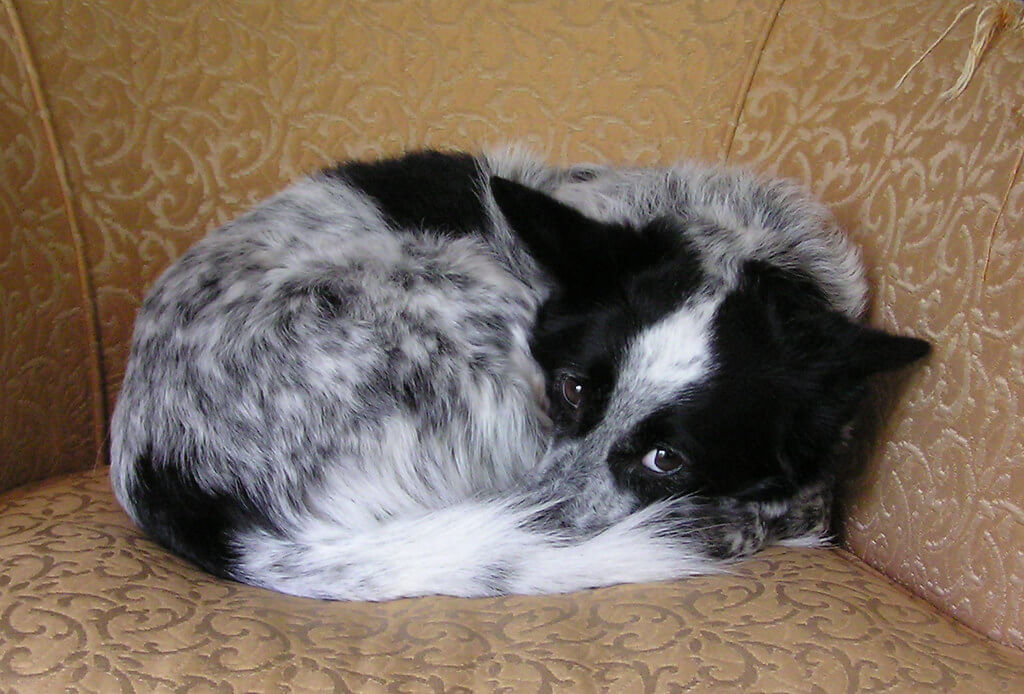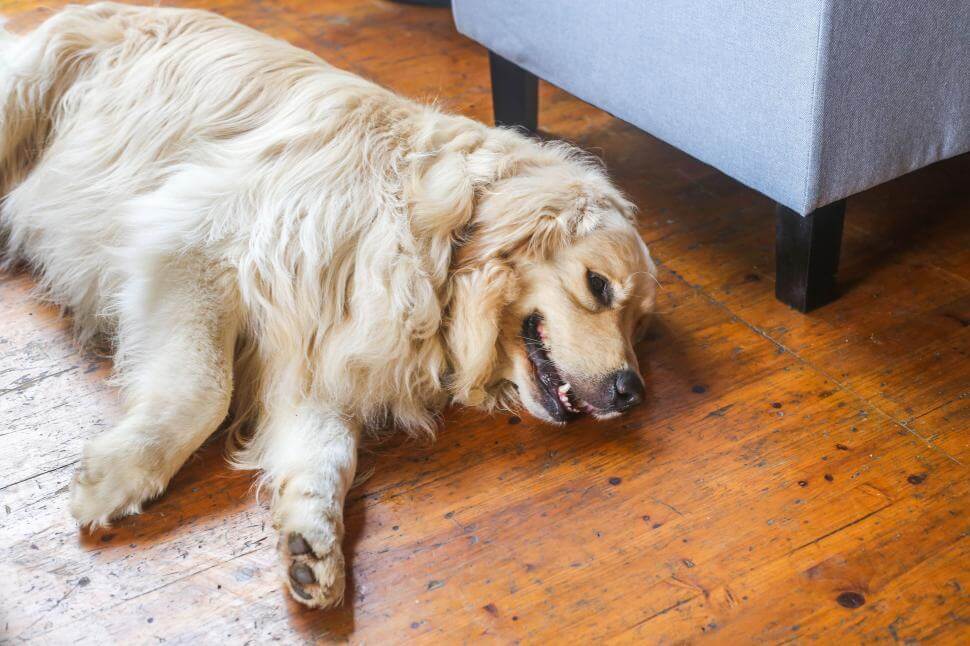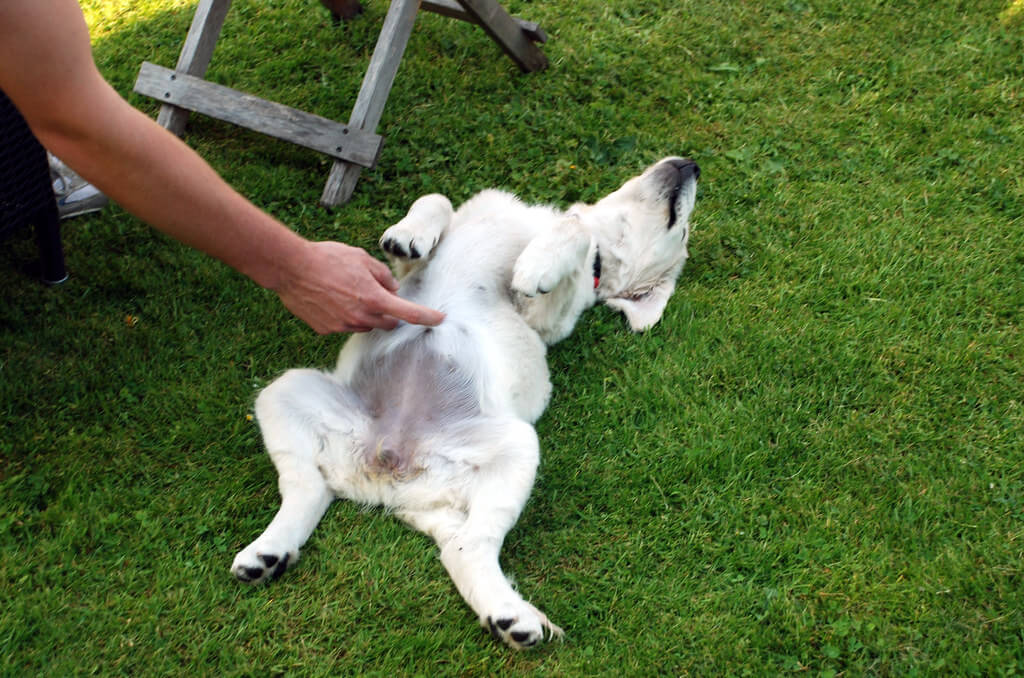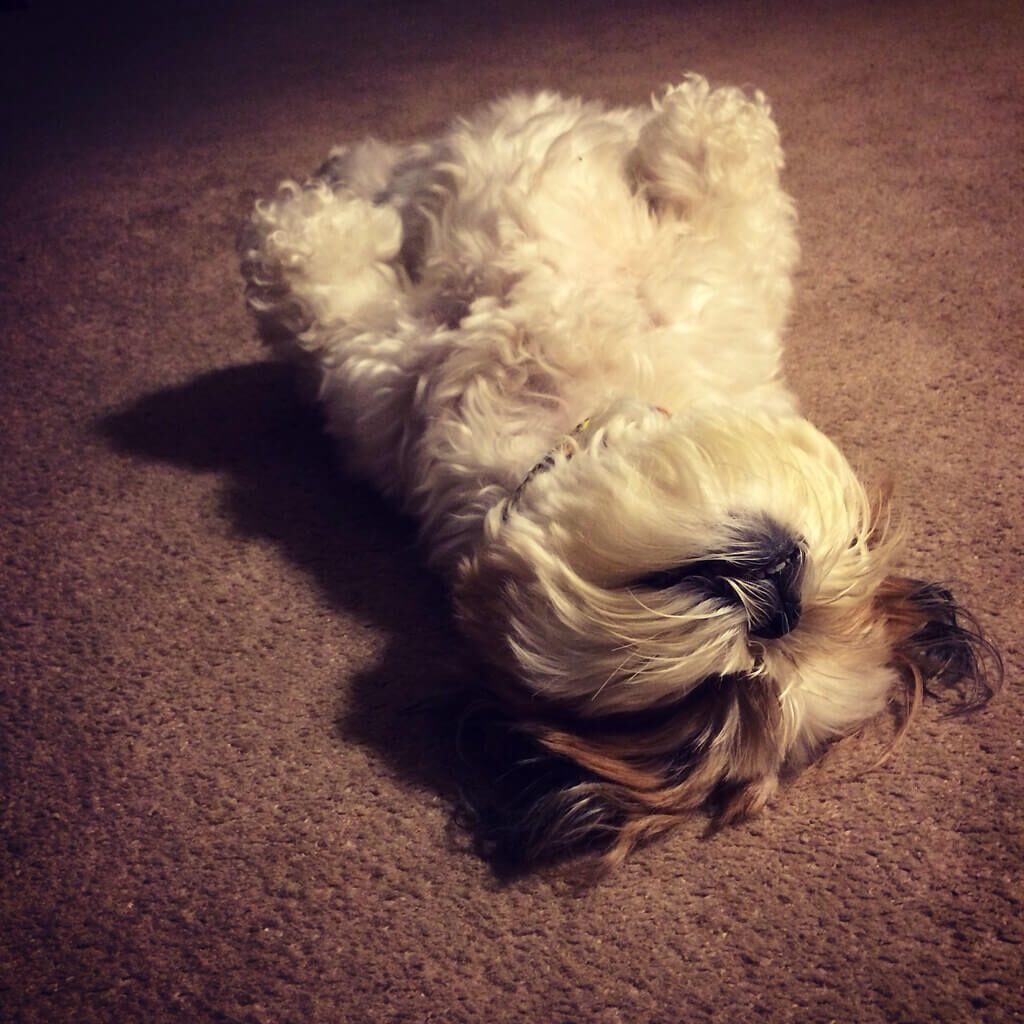Ever watched your furry friend snoozing and wondered what their sleeping positions might indicate? Understanding the different dog sleeping positions meaning can provide insightful glimpses into their comfort, personality, and health. In this article, we’ll explore five common dog sleeping positions and what they potentially signify, using the keyword “dog sleeping positions meaning” to guide our discussion.
The Curled-Up Position

The Curled-Up Position is one of the most common and instinctual sleeping positions observed in dogs. This position, where a dog curls up into a ball, with their paws tucked underneath and tail wrapped around the body, is not just adorable to look at but also holds significant insights into a dog’s mindset and natural instincts.
Rooted in Instinct:
The curled-up position is deeply rooted in a dog’s primal instincts. In the wild, ancestors of domestic dogs used this sleeping style for several vital reasons:
- Warmth: By curling up, dogs conserve body heat. This position reduces the surface area of their body exposed to the cold, helping them maintain warmth.
- Protection: Tucking in the vulnerable organs, dogs in this position protect themselves. It’s a defensive posture that guards the vital areas against potential predators or sudden attacks.
Sense of Security:
A dog curling up to sleep often signifies a need for security. In a new or unfamiliar environment, dogs may choose this position to feel safer. It’s a natural response to uncertainty, where they prepare to protect themselves or flee if necessary.
Comfort and Coziness:
Despite the instinctual roots, in a safe home environment, the curled-up position also indicates a dog’s desire for comfort. Dogs may choose this position on a soft bed or in a snug spot where they feel cozy.
Health and Age Factors:
- Younger and Energetic Dogs: They might curl up less often as they tend to sleep more deeply and are less alert.
- Older Dogs: They may prefer this position as it can provide a sense of security and comfort, especially if they are dealing with age-related anxiety or discomfort.
The Side Sleeper

The Side Sleeper position, where a dog sleeps lying on their side with legs extended, is another common sleeping posture seen in dogs. This position is rich in information about a dog’s sense of security and personality. Here are some in-depth details about the Side Sleeper position:
Comfort and Security:
- Sense of Safety: When a dog sleeps on their side, it indicates a high level of trust in their environment. This position leaves their vital organs exposed, which they would not do unless they felt safe.
- Relaxed State: Dogs in this position are usually in a deeper, more relaxed stage of sleep. They feel comfortable enough not to be on high alert.
Open Body Language:
- Vulnerability: By exposing their belly and throat, dogs demonstrate vulnerability and confidence in their safety. It’s a sign that they don’t feel the need to protect themselves.
- Ease of Movement: Dogs sleeping in this position can easily get up and move, indicating they are relaxed but still ready to be active if needed.
Temperature Regulation:
- Unlike the curled-up position, sleeping on the side allows for better air circulation around the body, helping dogs regulate their temperature, especially in warmer environments.
Physical Comfort:
- Joint Relief: For older dogs or those with joint issues, sleeping on the side can be more comfortable and less stressful on their bodies than curling up.
- Muscle Relaxation: This position allows for the muscles to relax fully, which can be particularly beneficial for active or working dogs.
The Superman Pose

The Superman Pose, a unique and charming sleeping position, is where a dog lies on their stomach with their front legs stretched forward and hind legs extended backward, resembling the iconic flying posture of Superman. This position is particularly prevalent among puppies and younger dogs and offers several insights into their behavior and temperament.
Playfulness and Energy:
- Readiness for Action: Dogs sleeping in the Superman Pose often do so to jump up and play at a moment’s notice. This pose allows for a quick transition from resting to action, indicating a playful and energetic nature.
- Puppy Behavior: Puppies are especially fond of this position due to their high energy levels and inclination for frequent playtimes.
Comfort in Warm Conditions:
- Cooling Down: The Superman Pose allows for better heat dissipation. Dogs sprawl out on cooler surfaces to lower their body temperature, making this a common position in warmer climates or after a bout of play or exercise.
Growth and Development:
- Room for Growth: Puppies, who are in rapid growth phases, may find this position more comfortable as it doesn’t constrain their developing bodies.
- Muscle and Joint Development: This posture can be beneficial for muscle and joint health, allowing full extension and relaxation, which is crucial for growing dogs.
Social and Environmental Comfort:
- Trust in the Environment: Sleeping in such an exposed position implies a degree of trust in their surroundings. Dogs would not adopt this vulnerable pose unless they felt secure in their environment.
- Social Confidence: This position may also indicate a dog’s confidence in their social standing within the home. They feel comfortable and unthreatened, not needing to protect themselves while resting.
Reflection on Daily Activities:
- Active Lifestyle: Dogs that engage in a lot of physical activities or play may choose this position as it allows for quick recovery and relaxation of muscles.
The Belly-Up Position

The Belly-Up Position, where a dog sleeps on its back with its belly exposed and paws in the air, is a distinctive and revealing sleeping posture. This position is quite telling about a dog’s personality, environment, and physiological needs. Here’s an in-depth look at the Belly-Up Position:
Ultimate Trust and Security:
- Vulnerability: The belly-up position is the most vulnerable posture a dog can assume while sleeping. It exposes their most sensitive areas, indicating a high level of trust in their environment and the people around them.
- Security in Surroundings: Dogs will only adopt this position if they feel completely safe and secure in their home. It’s a sign that they have no fear of threats or danger while they are resting.
Thermoregulation:
- Cooling Mechanism: The belly-up position helps dogs regulate their body temperature. The fur on a dog’s belly is thinner, and exposing this area helps them cool down more effectively, making it a common pose in warmer temperatures.
- Air Circulation: This position allows for maximum air circulation over the body, which is an efficient way to reduce body heat and maintain a comfortable temperature.
Comfort and Relaxation:
- Muscle Relaxation: Sleeping belly-up allows a dog’s muscles to completely relax. This can be particularly soothing for dogs with tight muscles or discomfort.
- Deep Sleep: Dogs in this position are often in a deep sleep, indicating they are feeling relaxed and content.
The “Passed Out” Position

The “Passed Out” Position in dogs, characterized by them lying on their back with all four paws up in the air, is a unique and often amusing sleeping posture. This position, while appearing comical, offers significant insights into a dog’s comfort level, trust in their environment, and physical well-being. Here are some detailed aspects of the “Passed Out” Position:
Ultimate Relaxation and Trust:
- Vulnerability: Similar to the Belly-Up Position, the “Passed Out” posture exposes a dog’s most vulnerable areas. This position is a clear indicator of the dog’s trust in their environment and the people around them.
- Deep Sleep: When a dog sleeps in this way, it often means they are in a deep, comfortable sleep, feeling secure and unthreatened.
Temperature Regulation:
- Cooling Off: This position is excellent for cooling down. By exposing their belly and paw pads to areas with less fur, dogs can regulate their body temperature more efficiently, especially in warm conditions.
- Air Circulation: The posture allows for maximum air circulation around the body, aiding in cooling and providing a comfortable resting experience.
Comfort and Physical Ease:
- Muscle Relaxation: The “Passed Out” position allows for total muscle relaxation. It can be particularly soothing for dogs after a long day of activity or for those with muscle soreness.
- Joint Relief: For some dogs, especially larger breeds, this position can relieve pressure on the joints, making it a comfortable choice for resting.
Conclusion
Understanding your dog’s sleeping positions can deepen your bond and help you cater to their needs more effectively. Each position, from the protective curl to the trusting belly-up, offers insights into your dog’s personality and comfort levels.
FAQ Section
- Can a dog’s sleeping position indicate health issues? Yes, sudden changes in sleeping positions can signal discomfort or health issues.
- Do different breeds have preferred sleeping positions? While some breeds may show preferences, individual personality often plays a bigger role.
- Can my dog’s sleeping position change as they age? Absolutely, as dogs age, they may adopt different positions for comfort.
- Is it normal for dogs to switch positions frequently during sleep? Yes, dogs often switch positions to regulate body temperature and comfort.
- Should I be concerned if my dog always sleeps in the same position? Consistency in sleeping positions isn’t typically concerning unless accompanied by other changes in behavior.





